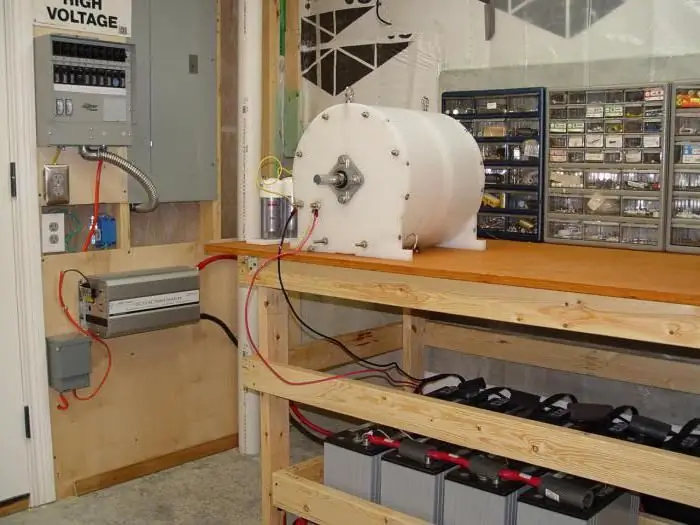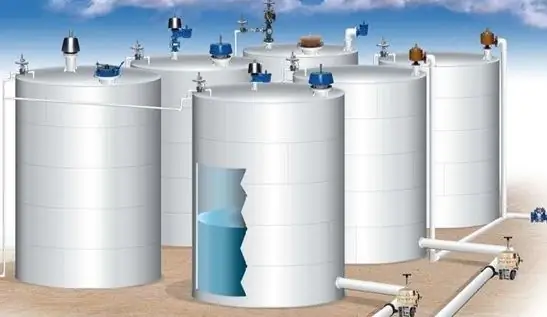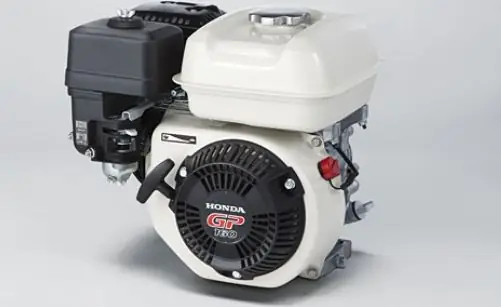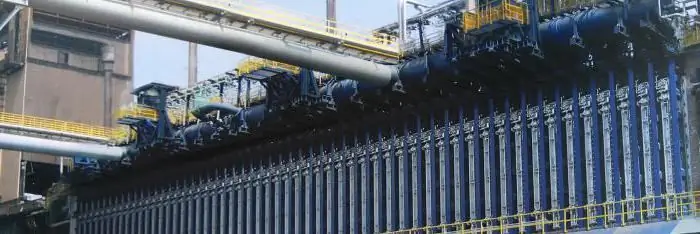2026 Author: Howard Calhoun | [email protected]. Last modified: 2025-06-01 07:12:56
Metallurgical production is simply unthinkable without the use of coke, which provides energy for the melting of iron ore in the blast furnace shaft. However, the process of obtaining coke is quite laborious and lengthy. To create it, special industrial units called "coke oven batteries" are being built. Their device, purpose and characteristic features will be discussed in this article.
Definition
Coke oven batteries are a whole metallurgical complex, the main purpose of which is the production of coke in the required volume for its subsequent transportation to blast furnace shops. These production facilities may differ in size from each other, but in any case, their dimensions are quite impressive.

Design
The arrangement of coke oven batteries is as follows. The main elements of these furnaces are the so-called coking chambers. It is in them that the process of laying raw materials takes place. There are more than a dozen coking chambers in the furnace. Also, the most important elements of the battery can be considered heating gaps in which fuel combustion occurs. Approximate linear dimensions of the coking chamber are as follows:
- Length - from 12 to 16 meters.
- Height - 4-5 meters.
- Width - 400-450 millimeters.
In general, the complex, thanks to which coke oven batteries are able to work continuously for a long period of time, includes the following components:
- A receiving hopper that receives raw coal.
- Department of mixing and crushing coal.
- Distribution tower.
- Loading trolley.
- Coking chamber.
- Coke ejector.
- Extinguishing car.
- Extinguishing tower.
- The platform onto which the cooled finished product is unloaded.
The oven itself for the production of coke in its general form is composed of:
- Chambers for loading coal charge.
- Heating wall with a system of heating ducts.
- Gas distribution and air supply system.
- Regenerator for heating air and exhaust gases.
- Isolating valves and mechanisms.

Classification
Coke oven batteries, depending on the mode of operation, are intermittent and continuous. These batteries can be heated:
- Exclusively blast-furnace gas.
- Coke oven gas only.
- A mixture of blast-furnace and coke oven gas.
The battery heating circuit may include:
- Changeover channel, thanks to which gases have the opportunity to get between the walls.
- Steam channel for recirculation.
Heating gas for the battery is supplied to it in two versions:
- Side, when coke oven gas flows through the cornuru (gas distribution channel), and air and blast-furnace gas - through the hearth channels of the regenerator.
- From below through a special air distribution network.

A few words about the regenerator
This special heat exchange device allows the heat carrier to come into contact with the clearly defined surfaces of the coke oven. It is important to note that the hot heat carrier heats the cold wall and nozzle, and after that they, in turn, transfer heat to the already cold heat carrier.
There are other types of heat exchangers, which are called "recuperators". In them, cold and hot coolants exchange energy between themselves through a wall specially erected between them. At the same time, hot gas streams descend first, and then the changeover valves are activated, due to which the already cold air stream begins to rise from the bottom up.

Fuel saving methods in coke production
The coking process itself is quite energy-intensive, which is caused by the consumption of a very large amount of fuel. Therefore, to reduce the consumption of its consumption, the following methods are used:
- Use the technology of dry coke quenching. Thanks to it, the thermal energy of the product is spent on steam heating.or water. In particular, about 1 GJ of heat in the form of steam is obtained from one ton of finished coke.
- Modernization of used regenerators for maximum heat recovery from combustion products. So, for example, it is quite possible to increase the heating area at the nozzle.
- Calculation of the optimal time interval between switching valves. It goes without saying that the more often they are switched, then in the long run this will make it possible to reduce the volume of regenerators and heat losses in them. At the same time, it should be noted that too frequent operation of the valves will inevitably lead to their rapid failure and additional load on all adjacent components and parts.
- Batch heating and dry coke quenching are carried out simultaneously.
Technological process
Coke production is very difficult. Therefore, to understand how it works in real conditions, it is worth knowing the technological cycle in as much detail as possible.
A coke shop always starts with a coal tower. This is where the raw material comes in. At the bottom of the tower there are special shutters. Through them, the coal is transported to the receiving bunkers of the coal-loading machine. In order to exclude the possibility of coal hanging inside the tower, compressed air is supplied along its entire height, which is supplied in intermittent pulses and guarantees the collapse of the mixture adhering to the walls of the tower. The tower must be at least two-thirds full.
The coal loading machine is filled either by volume or by mass. The filling process is controlled by scales. Coal is fed into the furnace immediatelyafter issuing the finished coke. In this case, the charge is fed through the top. At the moment of loading the coke oven, the person responsible for this - the hatch - includes the oven itself in the gas collector and activates the injection. The entire download process takes three to six minutes.

After that, the furnace is carefully sealed, and the process of heating the charge begins. The coke production technology in coke oven batteries provides for the following temperature processes:
- At 100-110°С coal is drying.
- In the range of 110°С - 200°С, hygroscopic and colloidally bound moisture, occluded gases are released.
- At 200°С - 300°С, thermal preparation occurs, which is accompanied by the formation of gaseous products of thermal destruction and the elimination of thermally unstable oxygen-containing groups.
- 300-500°С is the temperature range at which a plastic state occurs. Gas and steam are intensively released, a liquid phase is formed.
- 550-800°С - medium temperature coking. Synthesis intensifies.
- 900-1100°С - high-temperature coking.
Shipment of coke from the furnace
The coke oven battery, the principle of operation of which is described in this article, requires special preparation before issuing finished products from it. At least twenty minutes before the start of dispensing, the oven must be cut off from the gas collector and connected to the atmosphere by opening the riser cover.

After that, thethe doors of the oven are removed and the coconut is pushed out of the chamber into the quenching wagon using a special rod. At the same time, if for some reason there is a delay in the planned delivery of coke for more than ten minutes, then the doors should be installed back into place. It is strictly forbidden to open the riser covers prematurely, as this can cause a serious collapse of the lining inside the battery. In addition, oven doors must be cleaned of graphite and resin before and after the process of issuing finished products. Extinguishing coke in a special car is a mandatory procedure, because without this operation, the finished coke can ignite again.
Calculation of coke oven batteries provides that ovens must have a working and repair period. During the working cycle, coke is dispensed, and during the repair cycle, maintenance of all units and equipment, cleaning, etc. are carried out.
Essence
At the initial stage of coking, coal is dried, all adsorbed gases are removed from it and decomposition starts. At the moment of transition of coal to a plastic state, sintering begins - a process that is decisive for the entire coking cycle. At the third stage, semi-coke undergoes calcination and hardening. It is the viscous mass that induces resistance to the movement of gases on their way to the gas collector, due to which coking pressure is formed, which in practice is compensated by the shrinkage of the already formed coke.

Preservation
"Why can't the coke batteries be stopped?" - exactlysuch a question can very often be heard from the lips of a person who is far from the subtleties and nuances of coke production. The thing is that these units are oriented to work under certain conditions (high temperature, abrasive wear, etc.) and in the event of an unscheduled stop without appropriate preparation, these furnaces can lose their inner lining, which will simply collapse. However, in practice, sometimes it is necessary to suspend the operation of the coke oven battery and carry out certain conservation measures. How it works is too long to describe, one has only to point out that there is a so-called "cool" and "hot" preservation. Which option to choose from them is decided directly by the head of the enterprise, depending on the current situation and the reasons for the suspension of the unit.
Recommended:
Classification of engines. Types of engines, their purpose, device and principle of operation

Nowadays, most vehicles are powered by an engine. The classification of this device is huge and includes a large number of different types of engines
Driver controller: purpose, device and principle of operation

The use of a variety of vehicles today is very active. They all have in common that they need to be managed. The driver's controller is also designed for control. With it, you can remotely control the traction motor in braking or traction mode
Coke oven - metallurgical unit for making coke: device

The introduction of coke ovens into operation began in the 50s of the last century. The useful volume of the first typical furnaces was 21.6 Nm³. Further in the article we will consider the device of the named equipment
Reservoir breathing valve: purpose, device, principle of operation, verification

Oil refineries and technological complexes using oil and gas products contain a system of pipelines for servicing fuel materials in their working infrastructure. Maintaining sufficient performance in the circulation circuits of the same oil requires the use of special plumbing fittings. Its key element is the reservoir breather valve, through which the pressure is regulated
General purpose engines: device, principle of operation, application, photo

Automotive equipment is mainly equipped with standardized internal combustion engines (ICEs), the design of which is focused on placement in the engine compartment. However, there is a great demand for power units of this kind in the garden equipment segments, from manufacturers of snowplows, snowmobiles, etc. Moreover, the requirements for integration and operational parameters in such cases differ sharply from automotive standards

